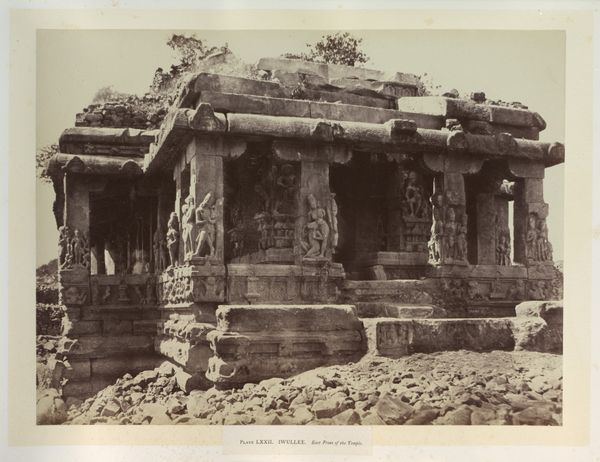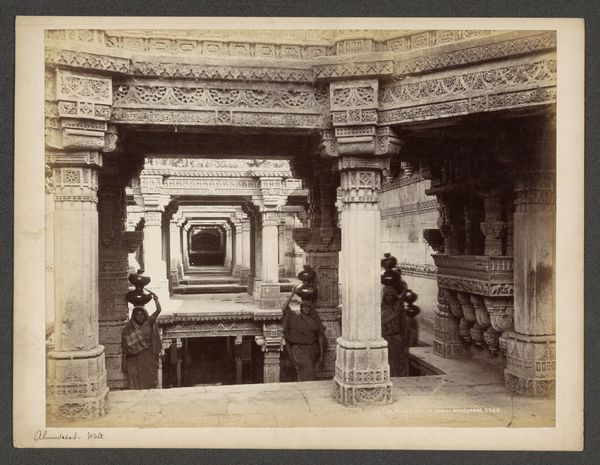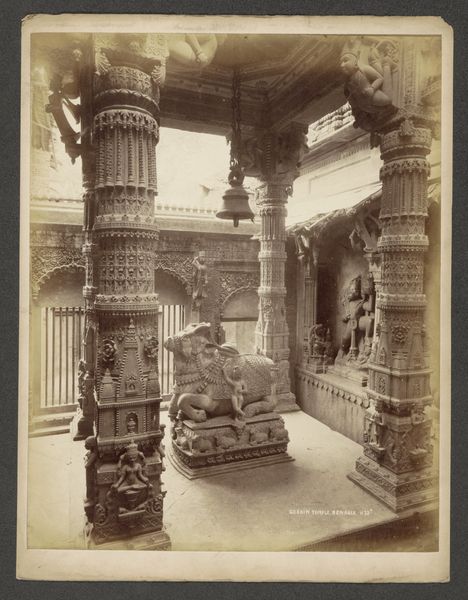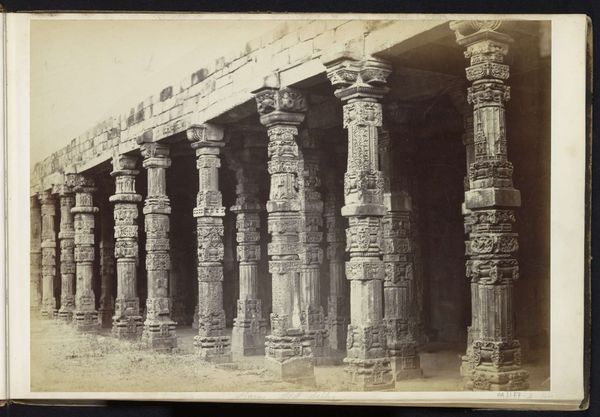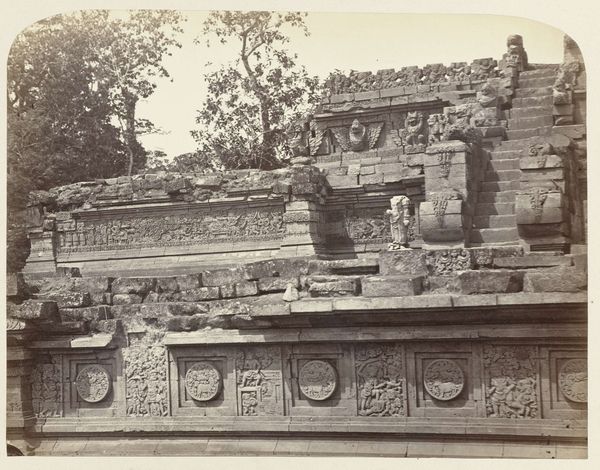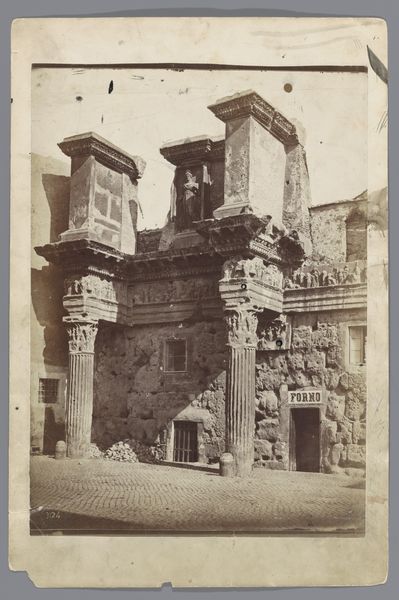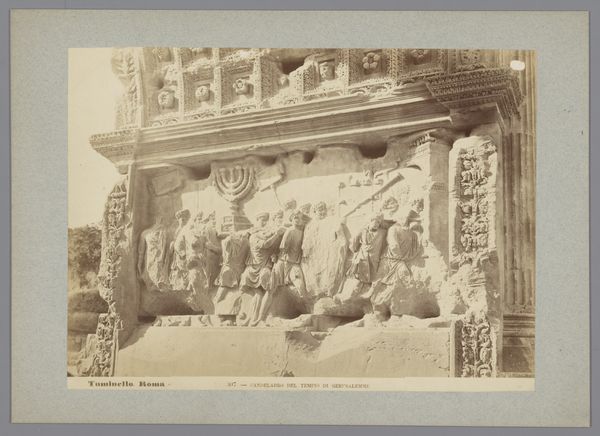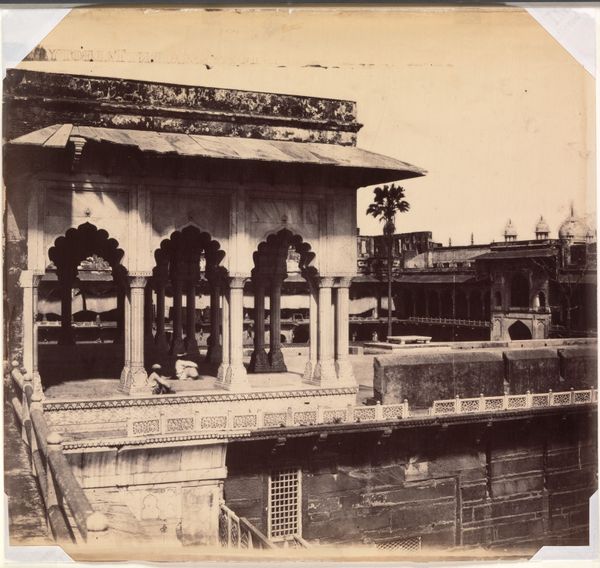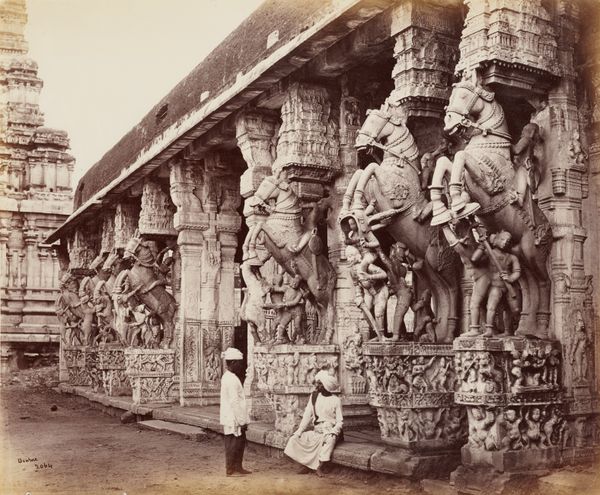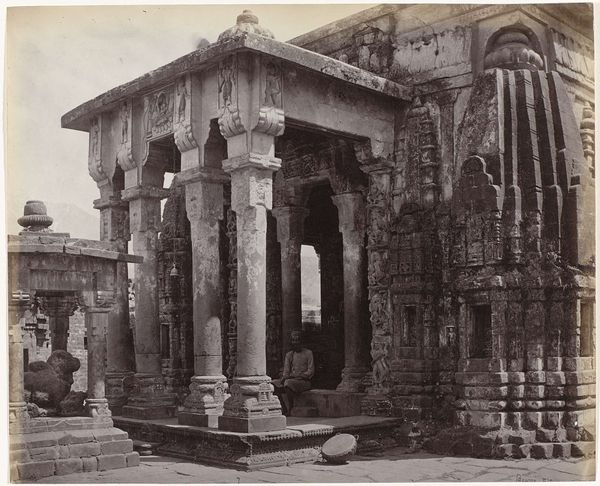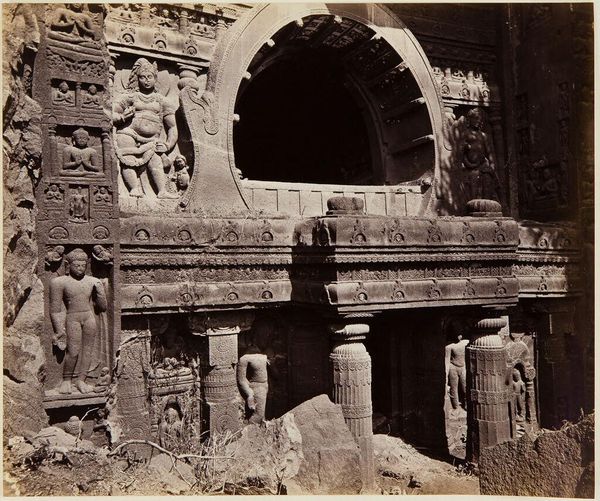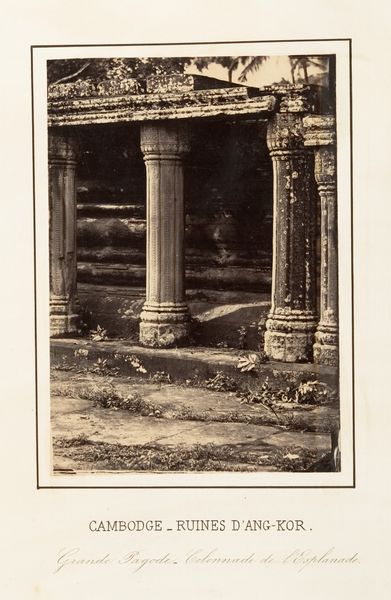
Carved pillars of the Meenakshi temple in Madurai, Tamil Nadu, India 1878
0:00
0:00
nicholasco
Rijksmuseum
carving, photography, architecture
#
carving
#
landscape
#
photography
#
ancient-mediterranean
#
column
#
architecture
Dimensions: height 231 mm, width 286 mm, height 246 mm, width 311 mm
Copyright: Rijks Museum: Open Domain
Curator: Let’s look at this photograph taken around 1878, showcasing the intricately carved pillars of the Meenakshi Temple in Madurai, Tamil Nadu, India. The image is attributed to Nicholas and Co. Editor: It’s strikingly monumental, isn’t it? Despite being a photograph, the weight of the stone is palpable, and those rearing horses—there's such dynamic energy captured in what I assume is static stone. Curator: Absolutely. We see these sculptural pillars that are deeply embedded within the sacred architecture of the temple, and temples, of course, are at the heart of community, political power, and ritual practice. These were spaces of enormous social and economic exchange. Editor: And you can sense the power radiating from them. Looking at those figures riding the rearing animals, do you feel there is a link with dominant masculine ideas of colonialism and dominance? I'm particularly drawn to how the riders almost appear suspended mid-air— frozen within an act of controlling animals that signify raw energy and unrestrained force. Curator: I agree. And how did that impact visual representation and cultural exchanges? These images were created, circulated, and collected within specific colonial networks. The act of photographing this space served a particular purpose – shaping Western understanding and engagement with it. I believe there are significant narratives that highlight marginalized voices impacted by colonialism in this picture. Editor: These complexities invite further research for sure. It gives me much to contemplate concerning this piece, I hadn't considered such narratives at first. Curator: The power of the image, isn’t it? To provoke not only awe, but a desire to question, and to seek further meaning. Editor: Yes. What’s striking about encountering this particular photograph is precisely how that gaze might change us, as viewers now, situated so differently than the audience from 1878. It truly provokes a re-evaluation of how art represents and shapes our world.
Comments
No comments
Be the first to comment and join the conversation on the ultimate creative platform.
